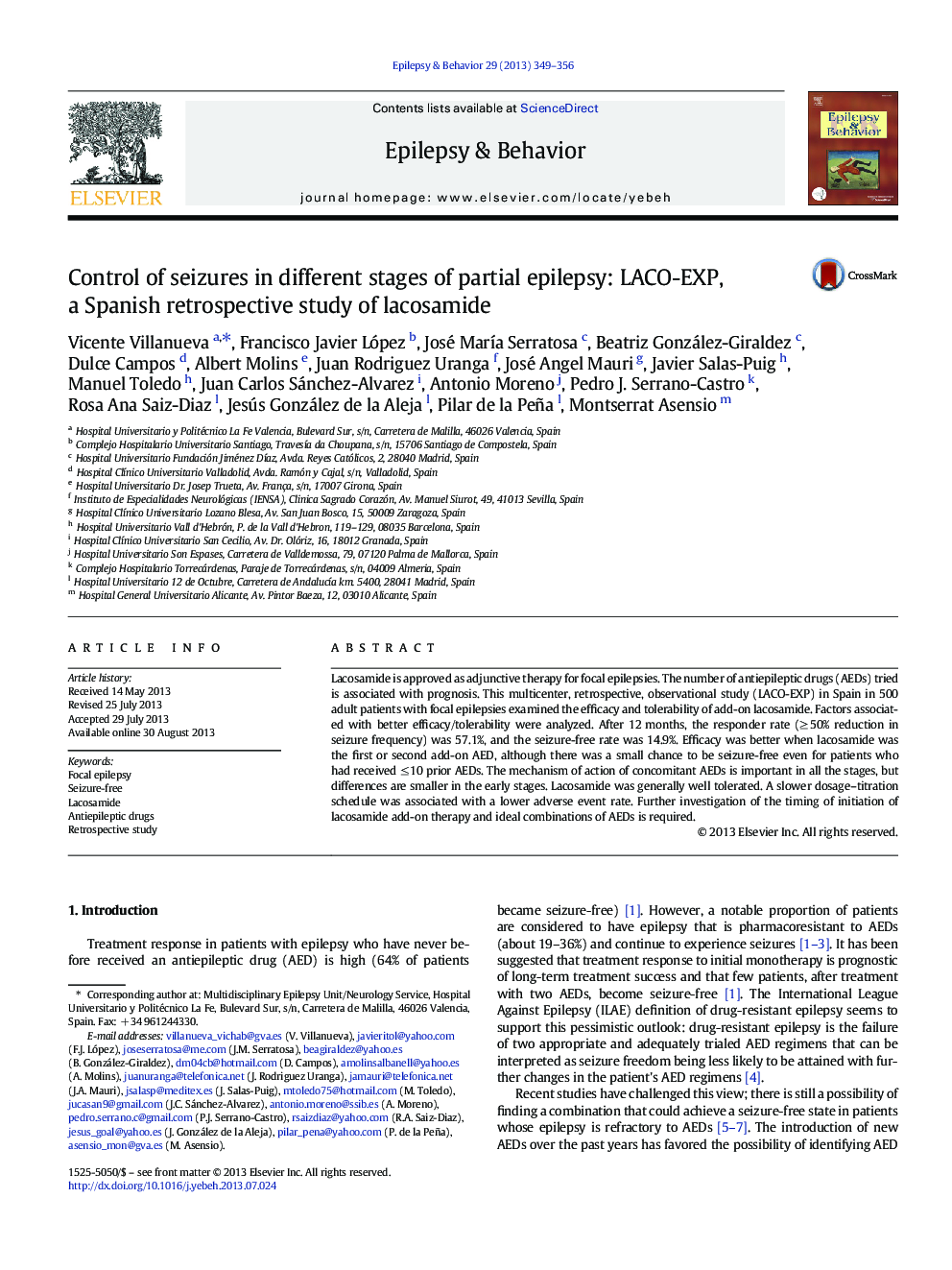| Article ID | Journal | Published Year | Pages | File Type |
|---|---|---|---|---|
| 3049694 | Epilepsy & Behavior | 2013 | 8 Pages |
•Investigated adjunctive lacosamide in 500 patients with partial-onset epilepsy•Study treatment with lacosamide offered patients who had received up to 10 prior AEDs a chance to be seizure-free.•Efficacy was better when lacosamide was used in the early stages of treatment.•The mechanism of action of concomitant antiepileptic drugs appeared to be less important in early stages.•A slower dosage–titration schedule was associated with a lower adverse event rate.
Lacosamide is approved as adjunctive therapy for focal epilepsies. The number of antiepileptic drugs (AEDs) tried is associated with prognosis. This multicenter, retrospective, observational study (LACO-EXP) in Spain in 500 adult patients with focal epilepsies examined the efficacy and tolerability of add-on lacosamide. Factors associated with better efficacy/tolerability were analyzed. After 12 months, the responder rate (≥ 50% reduction in seizure frequency) was 57.1%, and the seizure-free rate was 14.9%. Efficacy was better when lacosamide was the first or second add-on AED, although there was a small chance to be seizure-free even for patients who had received ≤ 10 prior AEDs. The mechanism of action of concomitant AEDs is important in all the stages, but differences are smaller in the early stages. Lacosamide was generally well tolerated. A slower dosage–titration schedule was associated with a lower adverse event rate. Further investigation of the timing of initiation of lacosamide add-on therapy and ideal combinations of AEDs is required.
